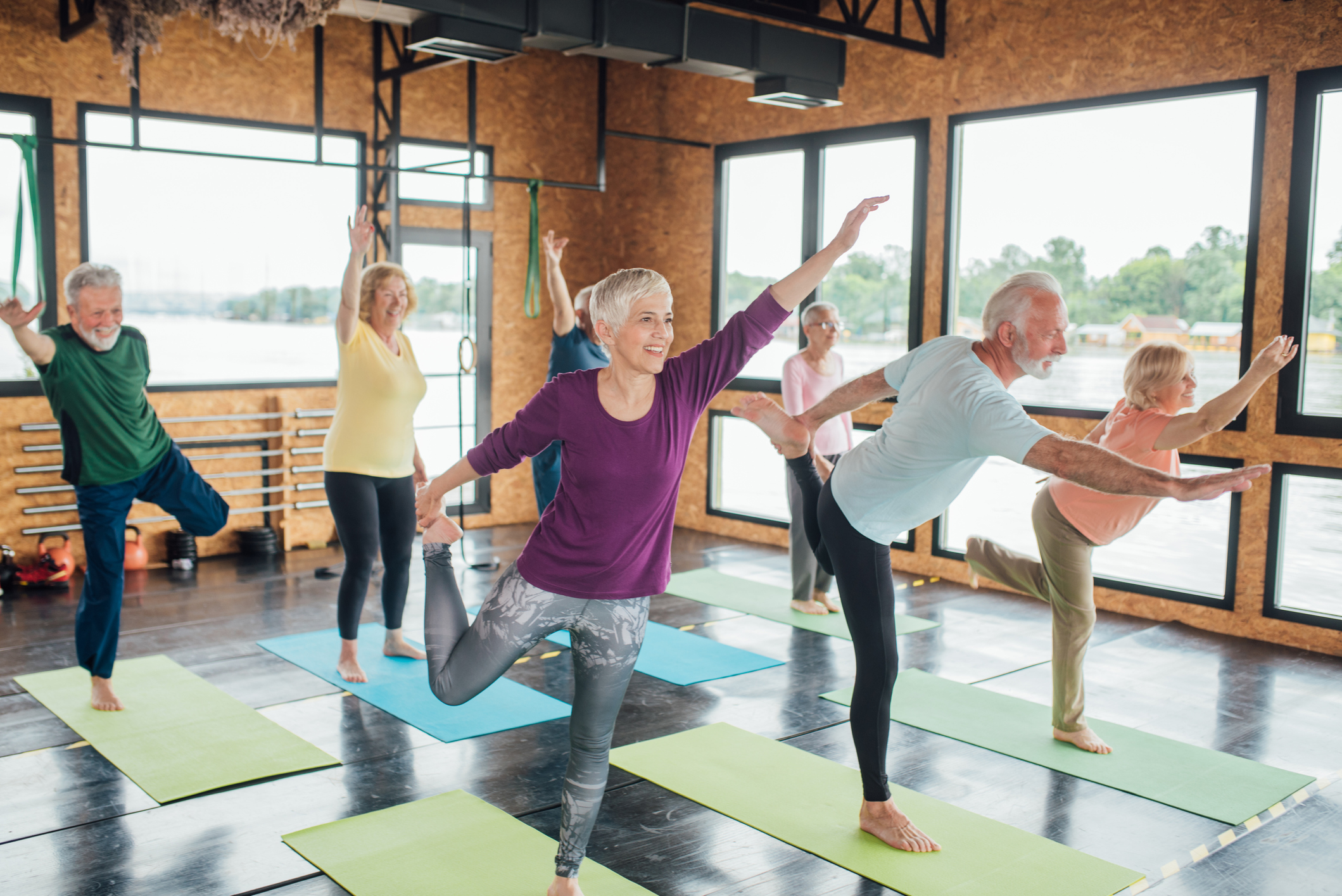Get Easy Health Digest™ in your inbox and don’t miss a thing when you subscribe today. Plus, get the free bonus report, Mother Nature’s Tips, Tricks and Remedies for Cholesterol, Blood Pressure & Blood Sugar as my way of saying welcome to the community!
Postural muscles: The key to reducing your fall risk

When I was 62, I took a fall outside that resulted in hand surgery.
Now, as I approach 65, I’m reading more and more about the increasing number of debilitating injuries and deaths in people my age that happen as the result of a fall.
My balance is no longer something I can take for granted. And I don’t want to end up incapacitated and unable to enjoy doing the things that give my life meaning.
But an increasing number of older people’s lives are forever changed (or ended) because of an accidental fall.
Fortunatlely, there’s a lot we can do to keep from becoming a statistic.
The statistics are frightening
Injuries and deaths related to falls in older adults are such that the problem has been described as a “hidden epidemic,” and the statistics certainly support this:
- A 2019 study found that for people over 75, the rate of mortality from falls more than doubled from 2000 to 2016.
- According to the CDC, deaths from unintentional injuries are the seventh leading cause of death in older adults, and falls account for the largest percentage of those deaths.
- Every 11 seconds, an older adult goes to an emergency room for an injury from a fall, according to the National Council on Aging.
“If deaths from falls continue to increase at the same rate, the U.S. can expect 59,000 older adults will die because of a fall in 2030,” says Elizabeth Burns, a health scientist at the National Center for Injury Prevention and Control, part of the CDC.
So what can you do to avoid becoming a statistic?
Postural muscles bring balance back
George Locker, a lifelong student of martial arts and teacher of tai chi, has written a book called Falling Is Not an Option: A Way to Lifelong Balance. He says that balance isn’t a skill, nor is it something we can achieve by sheer force of will.
Rather, it’s something our body learns to do automatically by engaging our postural muscles. Given the amount of sitting most of us do these days, he says, “the postural muscles literally forget how to maintain balance, even on steady, level surfaces.”
Here are two of the exercises Locker suggests to re-train our postural muscles:
- While brushing your teeth, stand on one leg and bend the knee and ankle. Keep your pelvic muscles relaxed. This will engage your postural muscles. Use your fingertips on the sink or wall if you need additional balance.
- Stand straight with your thigh and buttock muscles relaxed, then bend your knees and ankles as if you’re about to sit on a high stool. Keep your spine straight and your pelvis relaxed. Hold this position for as long as you can, increasing the time gradually as your postural muscles get stronger, up to 15 minutes.
The ancient martial art of tai chi focuses on slow, deliberate movements while maintaining one’s balance. Studies have demonstrated the effectiveness of tai chi practice on improving one’s balance.
Other ways to prevent falls
Of course, there are factors other than balance that make falls more likely. Here’s a checklist of safety improvements you can make in your home that will cut way back on the chance of your taking a fall.
Some other things to consider:
- Work on strength and resistance training. Weight lifting, Pilates, and exercises such as push-ups all build muscle.
- Walk and use stairs if you can. Join or start a walking club if it will help motivate you.
- Strengthen your quads. One way to do that is by leaning against a wall, sliding down into a squat, then standing again — and doing repetitions.
- Have your vision and hearing checked regularly. Clouded vision or impaired hearing can greatly increase your chances of falling.
- Check your medications. Talk with your doctor or ask your pharmacist about medication side effects that could increase your fall risk.
- Wear the right shoes. Find a pair that won’t make you slip.
Editor’s note: There are perfectly safe and natural ways to decrease your risk of blood clots including the 25-cent vitamin, the nutrient that acts as a natural blood thinner and the powerful herb that helps clear plaque. To discover these and other secrets of long-lived hearts, click here for Hushed Up Natural Heart Cures and Common Misconceptions of Popular Heart Treatments!
Sources:
Mortality From Falls Among US Adults Aged 75 Years or Older, 2000-2016 — Journal of the American Medical Association
Deadly Falls in Older Americans Are Rising. Here’s How to Prevent Them. — NY Times
Striking a Balance to Avoid Dangerous Falls — AARP
Tai chi may help prevent falls — NY Times
Improving Your Balance to Prevent Falls — NY Times













